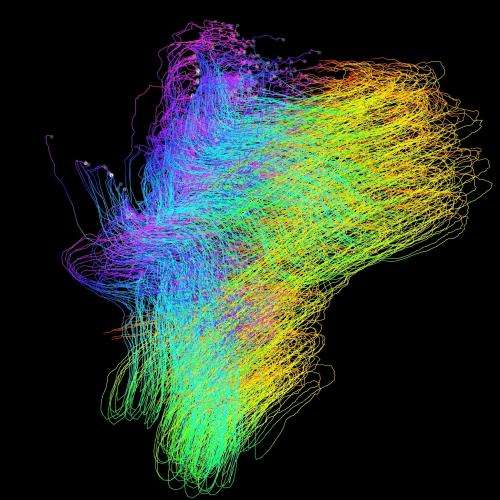NSF launches new cyberinfrastructure project to succeed TeraGrid

A partnership of 17 institutions last week announced a new project that allows researchers open access to the power of supercomputers, advanced computational tools and digital resources and services directly from their desktops.
Called Extreme Science and Engineering Discovery Environment (XSEDE), the project links computers, data and people from around the world to establish a single, virtual system that scientists can interactively use to conduct research.
Supported by the National Science Foundation (NSF), XSEDE will be the most advanced, powerful, and robust collection of integrated advanced digital resources and services in the world. NSF will fund the project for five years at $121 million.
"Enabling scientific discovery though enhanced researcher productivity is our goal, and XSEDE's ultimate reason for being," explained Barry Schneider, a program director in NSF's Office of Cyberinfrastructure.
"For this sort of cyberscience to be truly effective and provide unique insights, it requires a cyberinfrastructure of local computing hardware at sites around the country, advanced supercomputers at larger centers, generally available software packages, and fast networks. Ideally, they should all work together so the researcher can move from local to national resources transparently and easily."
XSEDE, and the experts who lead the program, will make that ideal a reality as it replaces and expands the TeraGrid project that started more than a decade ago.
More than 10,000 scientists used the TeraGrid to complete thousands of research projects at no cost to the scientists.
XSEDE will enable that same kind of work--only providing more detail, generating more new knowledge and improving our world in an even broader range of fields.
"The TeraGrid really helped invent the concept of having digital resources like supercomputers, tools and expertise spread across the country and allowing researchers to easily use them," said John Towns of the University of Illinois's National Center for Supercomputing Applications. Towns, who had a variety of roles in the TeraGrid project, will lead the XSEDE project.
"This is much more than just the same old resources that TeraGrid offered," Towns said. "XSEDE will take the next step by lowering technological barriers to access and use. We are creating a distributed cyberinfrastructure in which researchers can establish private, secure environments that have all the resources, services, and collaboration support they need to be productive."
The XSEDE User Access Layer, for example, will provide a comprehensive view of the resources available--not just those at XSEDE partner sites, but any resources. It will integrate authentication and job monitoring, providing a comprehensive view and single contact point for all the cyberinfrastructure that researchers need to achieve their science and education goals.
XSEDE will provide an array of services to ensure that researchers can make the most of the supercomputers and tools. This will include outreach to new communities that have not traditionally used cyberinfrastructure and other digital services. It will also include advanced support for very large, complicated, or novel uses of XSEDE resources.
Initially, XSEDE will support 16 supercomputers across the country. It also will include other specialized digital resources and services to complement these computers. These resources will be expanded throughout the lifetime of the project.
Provided by University of California - Berkeley
















